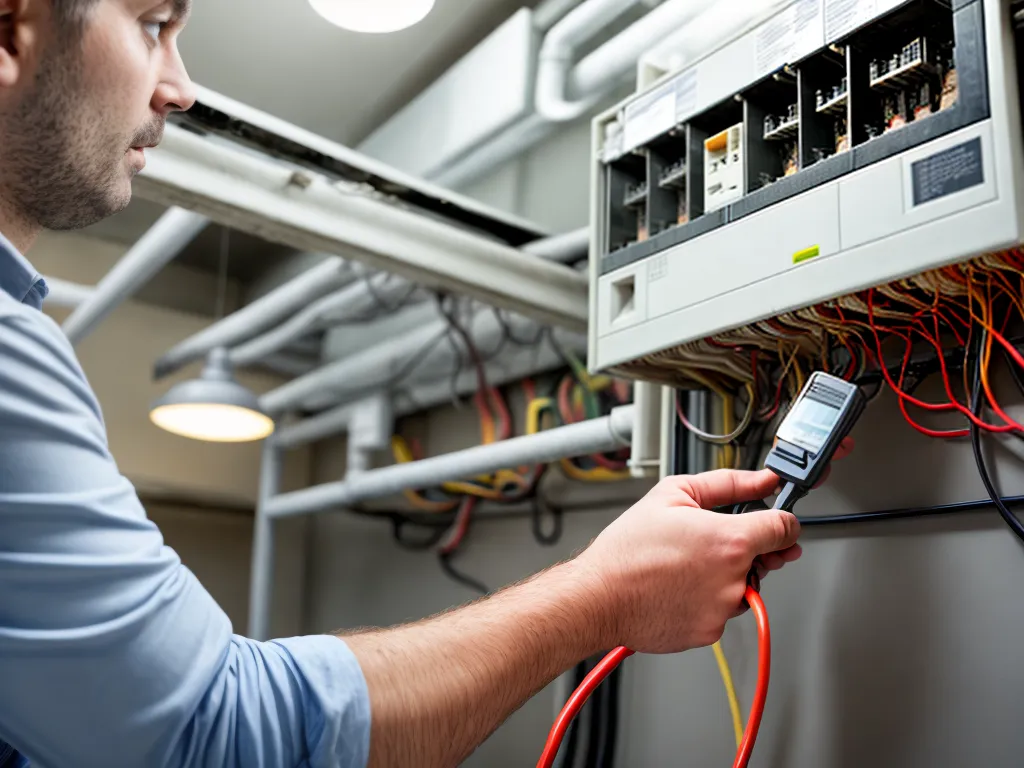
How to Save Money on Commercial Electrical Upgrades While Maintaining Safety
Introduction
Upgrading the electrical system in a commercial building can be a major expense, but there are ways to reduce costs without compromising safety. As the building owner or manager, it's important to understand where savings can occur and how to work with electrical contractors to maximize value. In this article, I'll provide tips on saving money on commercial electrical upgrades while following proper safety protocols.
Evaluate Your Electrical Load Needs
The first step is to thoroughly evaluate your electrical load needs. This involves looking at the building's size, number of occupants, types of equipment used, and plans for future expansion. A detailed electrical load study by a qualified contractor will analyze the existing system and projected usage.
This allows you to size new electrical components properly - oversizing wastes money while undersizing risks blowing fuses or circuit breakers. Correctly rating new gear and circuits for your actual usage avoids spending on unnecessary capacity.
Use a Competitive Bidding Process
Solicit bids from several licensed electrical contractors to get competitive pricing. Provide each bidder with the detailed electrical load study and outline the scope of work. Make sure all contractors bid on the same specifications so you can do an apples-to-apples comparison.
Review each bid thoroughly and pay attention to material types and labor rates. Ask questions to understand pricing differences between bidders for similar work. Avoid choosing based solely on lowest upfront cost - a higher bid may offer better materials, expertise, and value over the long term.
Take Advantage of Off-Peak Utility Rates
Some utilities offer lower rates for commercial customers who use electricity at night or other off-peak times. Consider scheduling major electrical upgrades like replacing service panels or running new circuits overnight when labor costs are lower too.
Ask your utility about time-of-use rates or incentive programs that reward off-peak usage. This provides savings on both the project cost and ongoing power bills.
Purchase Energy Efficient Equipment
When upgrading lighting, HVAC systems, machines, and appliances, buy ENERGY STAR rated equipment. While these products carry a higher initial price tag, they pay back over time through significantly lower energy consumption over the life of the equipment.
There are often utility rebates and tax incentives available for investing in certified high-efficiency equipment as well. Combining these can minimize the payback period for the added costs.
Use Certified Refurbished Parts When Possible
For some equipment like breaker panels, switchgear, transformers, and automatic transfer switches, consider using certified refurbished units. These parts have been professionally inspected, tested, and repaired to like-new condition by the original manufacturer.
Refurbished units can cost 20-50% less than new while still carrying a warranty - be sure parts are UL certified. This is an ideal way to maximize savings on essential but expensive gear.
Take Advantage of Off-Hours Work
Since commercial facilities are occupied during the day, electrical upgrades often involve working nights and weekends to minimize disruptions to the business. Most contractors charge extra for off-hours work.
Ask your chosen electrician about waiving or reducing overtime fees since the nature of the project requires non-standard hours anyway. They may be willing to charge regular rates given the extensive work scope.
Maintain Safety
While the above tips can yield substantial savings, it's critical to never cut corners on safety. All electrical work must meet National Electrical Code and local permitting requirements. Only make reductions in cost that don't sacrifice worker safety or create fire hazards.
Conclusion
Upgrading a building's electrical service can be done cost-effectively without increasing risk - you just need a well-planned approach. Carefully evaluating your needs, using competitive bidding, taking advantage of off-peak incentives, purchasing energy efficient equipment, and utilizing refurbished parts can all add up to major savings while still following safety best practices.